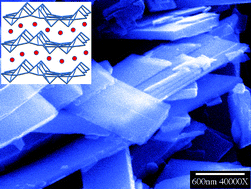VO2nanosheets exhibiting a well-defined metal–insulator phase transition
Abstract
The ultrafast first-order metal–insulator phase transition in VO2 is characterized by a several orders of magnitude change in optical transmittance and electrical conductivity, which makes this material an attractive candidate for use in a wide variety of applications ranging from Mott field-effect transistors to thermochromic coatings and optical waveguides. However, relatively little progress has been achieved in fabricating VO2nanostructures exhibiting a well-defined metal–insulator transition despite the potential attractiveness of such structures as building blocks for novel nanoscale electronic devices. Herein, we present a solution-based approach for the synthesis of monoclinic single-crystalline VO2nanosheets exhibiting a well-defined metal–insulator phase transition by combining the facile hydrothermal


 Please wait while we load your content...
Please wait while we load your content...